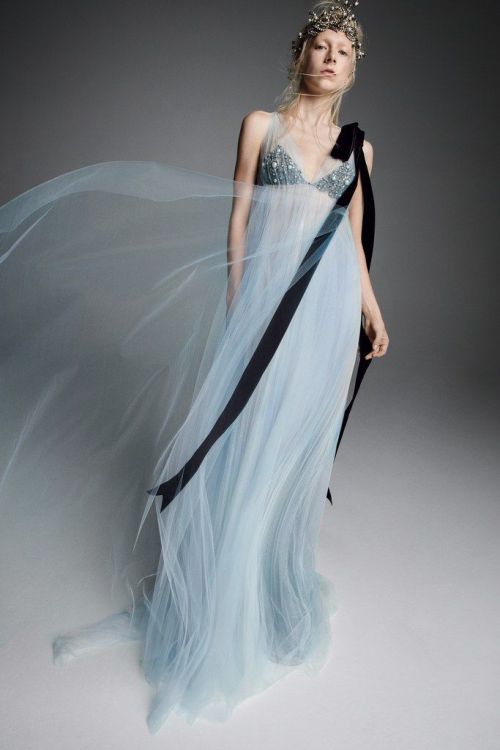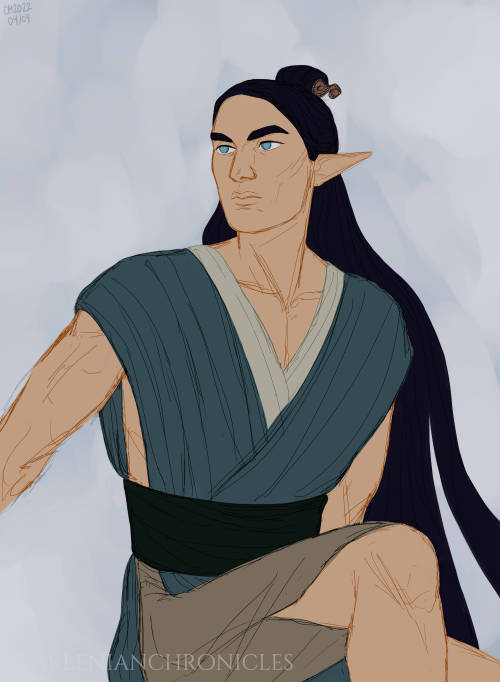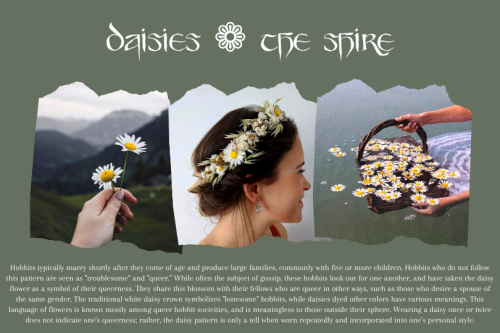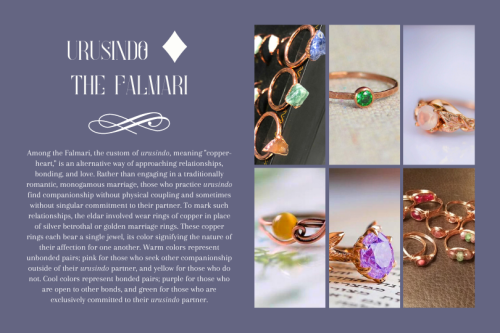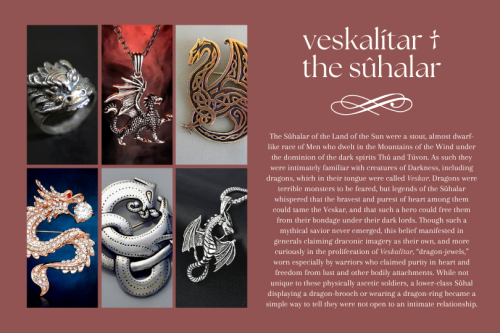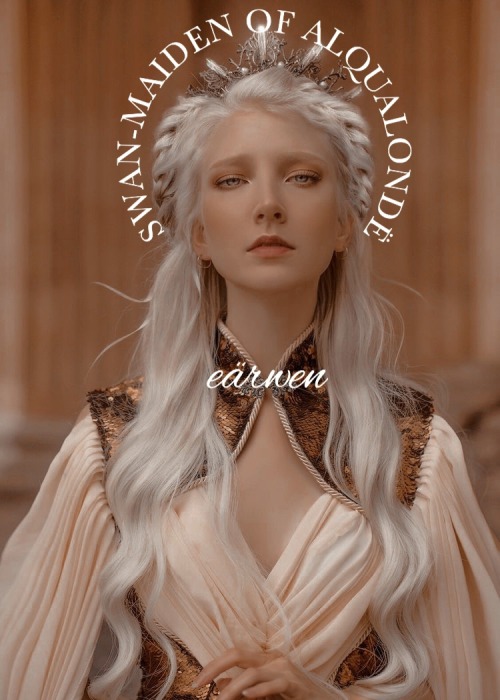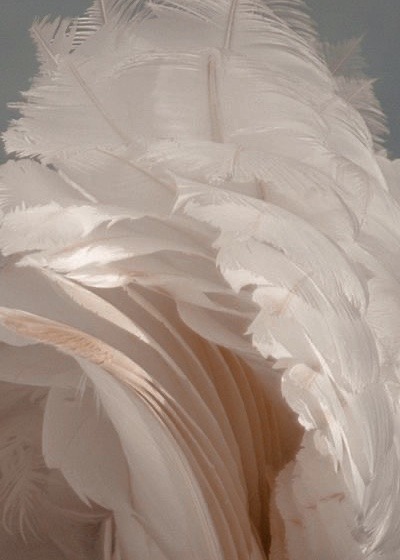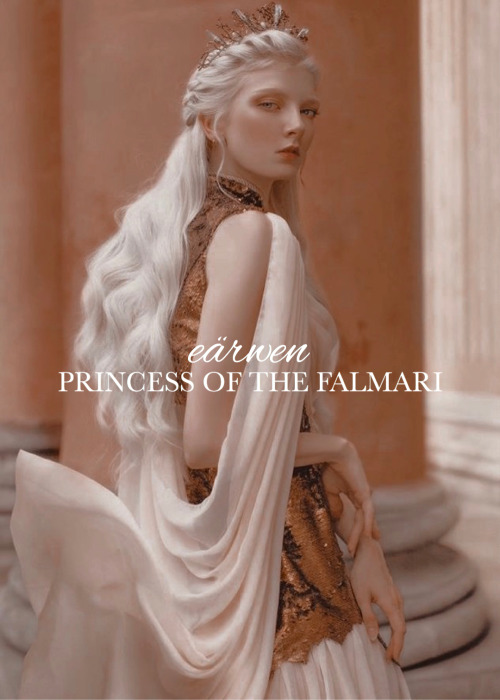#falmari
~early Second Age~
Sindar perspective:
- You abandoned us in Middle-earth
- We’re stronger and wiser than you because we actually went through stuff and fought the Enemy while you sat around in safety twiddling your thumbs
- You prioritized your grudge against the Noldor over our lives
- You’re stuck up and tacky and had your brains fried by Trees and have all the same problems as the Noldor except for kinslaying
- We don’t need or want your charity
Lindar of Alqualondë perspective:
- Elwë abandoned us first, and gave up any right to speak for us or act for us
- Speaking of sitting in safety twiddling one’s thumbs while others fought and died, were you one of the Iathrim?
- Sure it was nothing like what you went through but stop saying we have never suffered.
- Sure we had some overly emotional people who screwed up then, but at least we never hunted dwarves for sport
- Do NOT badmouth the Trees
- We were trying to help, you seemed lost
Artist Jessica Galbreth Turns Seashells Into Beautiful Jewelry
TOL-ERESSËA:Gliril’s wedding was on board her father’s ship. Her sisters draped her with jewels and seashells, and the sea-spray fell like dew on them as she and her lover pledged themselves to each other.
Post link
GABRIELLE BAKKER, Leda - Prototype 2004 - Gouache on Paper - 17"x12.5" source
@crocordile, Eärwen?????????
ELIZABETH YES!!!
Post link
Telerin Portraits: Olwë, Círdan, Eärwen, Celebrían, Lenwë, and Denethor.
Well, more accurately, this is a mix of Teleri subdivisions, including the Falmari and Nandor. I ended up including Lenwë and Denethor because there were hardly any named Teleri already ^^;;
My designs for these are more Asian-inspired, with a mix of (loosely) Ancient Greek fashion. At the same time, I wanted it to have a similar vein to Sindarin fashion, given that they were all lumped together before the journey to Aman. I’d say the draping robe is something that especially links Thingol and Olwë’s clans together, albeit being used in somewhat different ways here; and then there’s the V-neck and split-shoulder aspects also!
As for the Nandor, their hair ornaments are carved from wood. Lenwë has a leaf design whereas Denethor’s is more like a twisty corkscrew loll
Post link
@aspecardaweek day four | worldbuilding |a-spectrum symbols in arda
DAISIES❁ THE SHIRE
[3 images on a muted green background. 1: A pale hand holding two plucked daisies, with mountains in the background. 2: A light-skinned young woman with dark hair wearing a daisy flower crown. 3: Two pale arms holding a brown wicker basket mostly-submerged in still water, collecting floating daisies from the surface.]
Hobbits typically marry shortly after they come of age and produce large families, commonly with five or more children. Hobbits who do not follow this pattern are seen as “troublesome” and “queer.” While often the subject of gossip, these hobbits look out for one another, and have taken the daisy flower as a symbol of their queerness. They share this blossom with their fellows who are queer in other ways, such as those who desire a spouse of the same gender. The traditional white daisy crown symbolizes “lonesome” hobbits, while daisies dyed other colors have various meanings. This language of flowers is known mostly among queer hobbit socieities, and is meaningless to those outside their sphere. Wearing a daisy once or twice does not indicate one’s queerness; rather, the daisy pattern is only a tell when worn repeatedly and incorporated into one’s personal style.
BIJEBTORV’AFÂH▣ THE DWARVES
[2 images, the first on a burgundy background and the second on a teal background. 1: Close-up of two black beads sitting on a rock. 2: Close-up of a brown mustache with two gold beads at the ends; the person with the mustache has pale skin and part of their beard is visible.]
Beads are often placed in dwarven beards, but when woven into mustaches, they take on a specific meaning: an indication that one is bijebtorva, or has chosen their craft over marriage. Less than a third of the dwarven population marries, and it is custom for a dwarf to only marry once for truest love. Though only those of noble houses are pressured to wed and reproduce, most dwarves are open to the possibility should it come their way. Bijebtorvadwarves are the exception, choosing not to wed at all, and by the wearing of beads in their mustaches they symbolize that they are not available for courting. These beads, known as bijebtorv’afâhor “beads of the craft-chosen” are of great spiritual import and are always crafted by the wearer themself.
URUSINDO ♦ THE FALMARI
[6 images on a muted purple background. 1: Three copper rings, each with a different colored gem; one is yellow, one is light green, and the last is blue. 2: A copper ring with a bright green gem. 3: A copper ring with a pale pink gem. 4: A copper ring with a yellow gem. 5: A copper ring with a purple gem. 6: Several copper rings bearing gems of pink and green.]
Among the Falmari, the custom of urusindo, meaning “copper-heart,” is an alternative way of approaching relationships, bonding, and love. Rather than engaging in a traditionally romantic, monogamous marriage, those who practice urusindofind companionship without physical coupling and sometimes without singular commitment to their partner. To mark such relationships, the edar involved wear rings of copper in place of silver betrothal or golden marriage rings. These copper rings each bear a single jewel, its color signifying the nature of their affection for one another. Warm colors represent unbonded pairs; pink for those who seek other companionship outside of their urusindopartner, and yellow for those who do not. Cool colors represent bonded pairs; purple for those who are open to other bonds, and green for those who are exclusively committed to their urusindopartner.
VESKALÍTAR † THE SÛHALAR
[6 images on a muted red background. 1: A silver ring emblazoned with the face of a dragon. 2: a silver pendant of a rearing dragon. 3: A stylized gold-and-black dragon brooch. 4: A rose gold dragon brooch bedazzled with small white gems and holding a larger white gem in its mouth. 5: a simplified silver dragon brooch. 6: A silver pendant of a legless dragon.]
TheSûhalar of the Land of the Sun were a stout, almost dwarf-like race of Men who dwelt in the Mountains of the Wind under the dominion of the dark spirits Thû and Túvon. As such they were intimately familiar with creatures of Darkness, including dragons, which in their tongue were called Veskar. Dragons were terrible monsters to be feared, but legends of the Sûhalar whispered that the bravest and purest of heart among them could tame the Veskar, and that such a hero could free them from their bondage under their dark lords. Though such a mythical savior never emerged, this belief manifested in generals claiming draconic imagery as their own, and more curiously in the proliferation of Veskalítar, “dragon-jewels,” worn especially by warriors who claimed purity in heart and freedom from lust and other bodily attachments. While not unique to these physically ascetic soldiers, a lower-class Sûhal displaying a dragon-brooch or wearing a dragon-ring became a simple way to tell they were not open to an intimate relationship.
AIRËVASAR✬ THE NIENNILDI
[2 images, the first on a muted orange background and the second on a blue background. 1: A woman with brown skin and bleached hair wearing a blue robe, a many-rayed crown, and a gauzy blue veil. 2: A woman with brown skin and dark hair wearing a gold robe patterned with suns, gold jewelry, and a gauzy white veil.]
Following the tradition of the Noldor, veils were popularized in early Númenor by Lady Halyamórë, wife of Vardamir Nólimon. Halyamórë was a devotee of Nienna and wore the veil in her honor, and though for many Númenórean noblewomen veil-wearing was a fashion for formal events, veils retained their religious symbolism, earning the name airëvasar, “holy veils.” Airëvasarvaried in style and meaning, but a gauzy facial veil became the specific symbol of the Niennildi, women who devoted themselves to Nienna’s service and swore never to marry, as their Valië was herself unwed. For many this was a political choice, but other Niennildi took the veil for personal reasons, especially to avoid unwanted betrothals and romantic pursuits altogether.
꧁NINKWI-HELTHWIN OF THE LAIKWENDI꧂
[3 images on a muted purple background. 1: Dark-skinned feet with white henna patterns. 2: A dark-skinned back with white henna patterns. 3: Dark-skinned hands with white henna patterns.]
Among the Laikwendi of the Silvan realms, helthwin(lit. “swirling skin”) is the practice of painting one’s skin with semi-permanent dyes extracted from native plants. Helthwinink is applied as a leisure activity or to show one’s artistic skills, and is commonly worn at festivals and revels where much skin is bared; it may also be worn into battle or diplomacy as a cultural symbol of the Laikwendi. Most helthwinink is a dark red or brown in color, but especially at revels where elves often take lovers for the night, specially treated white ink called ninkwi-helthwin is worn to indicate an individual has no interest in partnering. Developed from this custom, many Laikwendi who have no desire to wed or lay with another will take to applying ninkwi-helthwin ink to their skin in their daily lives as a marker of their general preferences.
Post link
finwean ladies ✰ eärwen
Princess of Alqualondë wasEÄRWEN, the daughter of Olwë. She was wed to Arafinwë, Prince of the Noldor, with whom she had four children: Findaráto, Angaráto, Aikanáro, and Artanis. The most beloved friend of Eärwen was Anairë, her sister-in-law. It was on account of this great friendship that Anairë remained in Aman when much of the Noldor went into exile.
Post link


